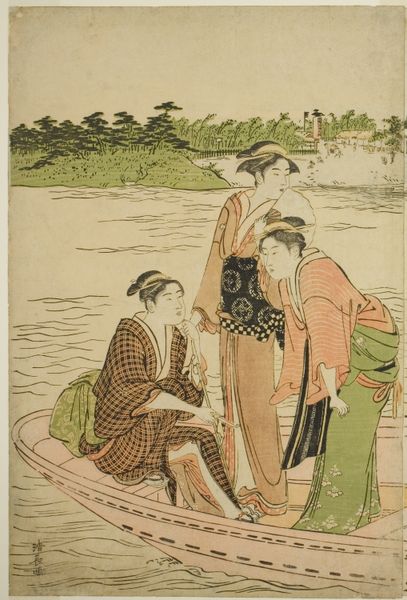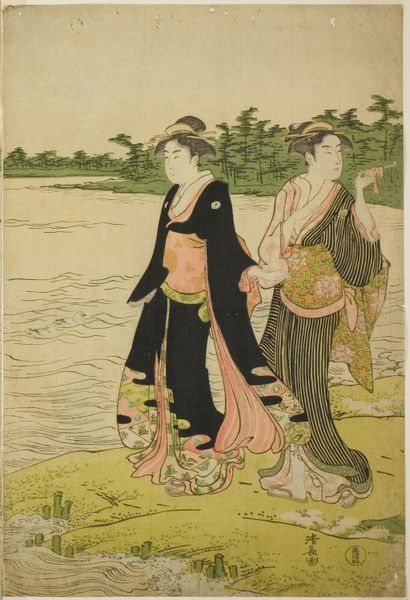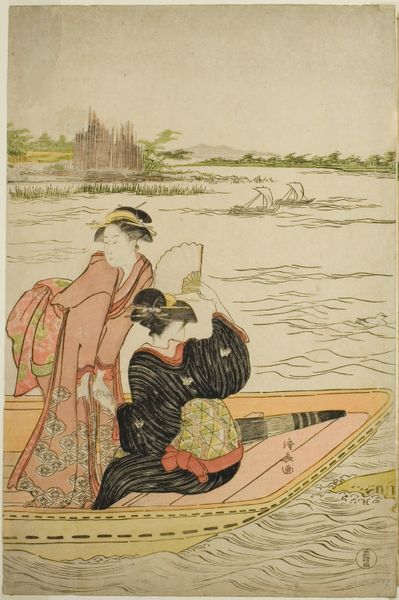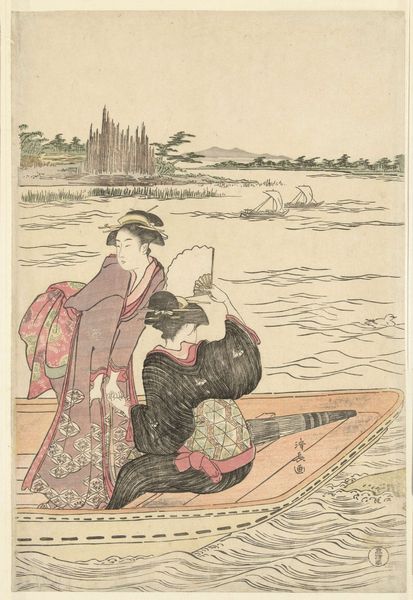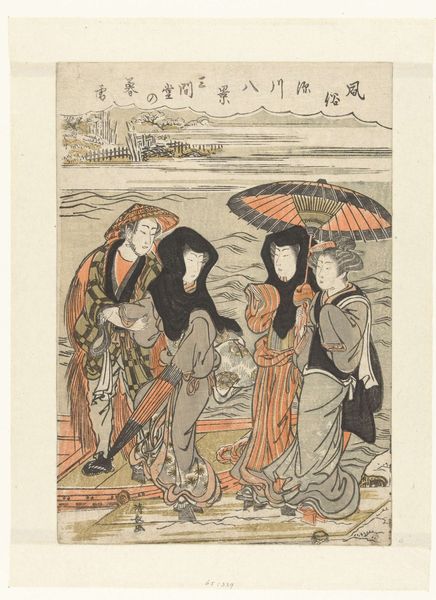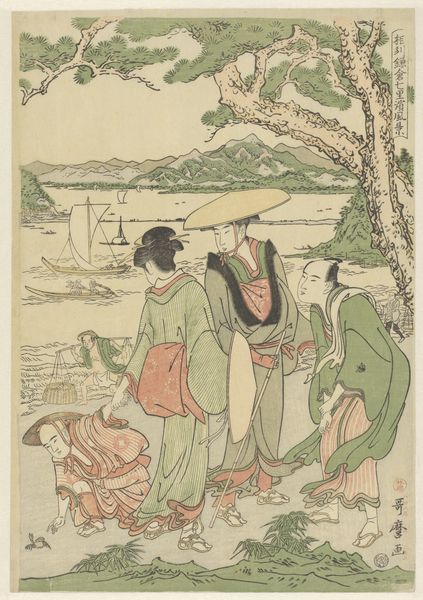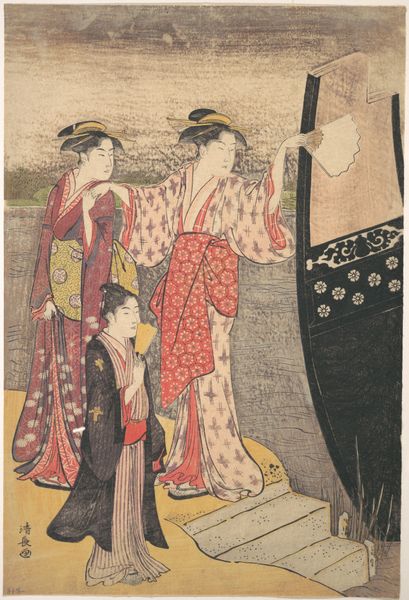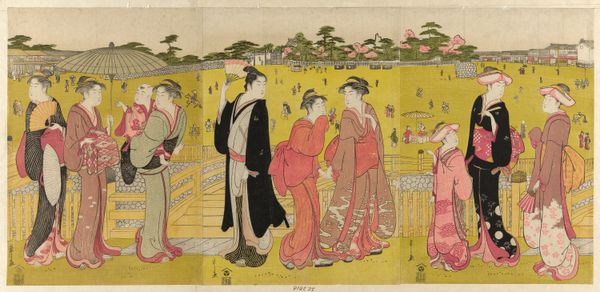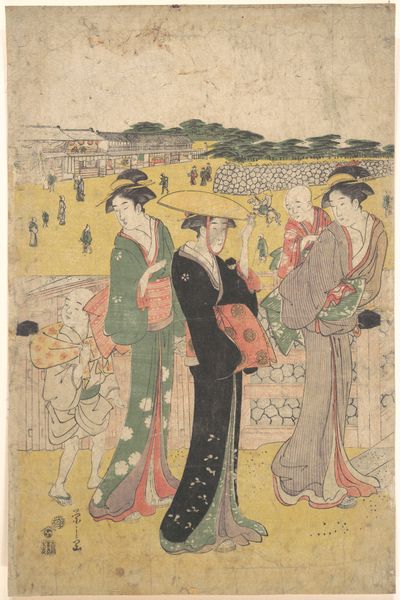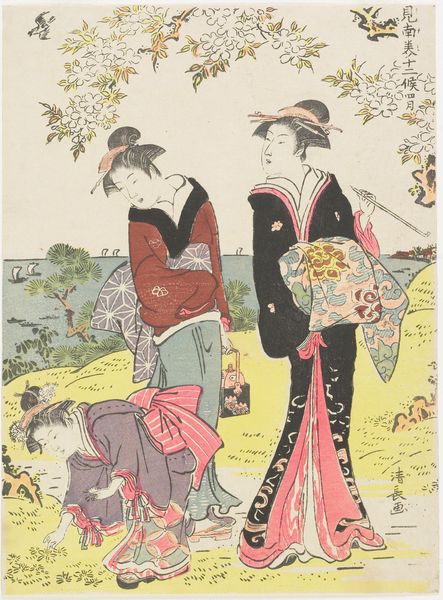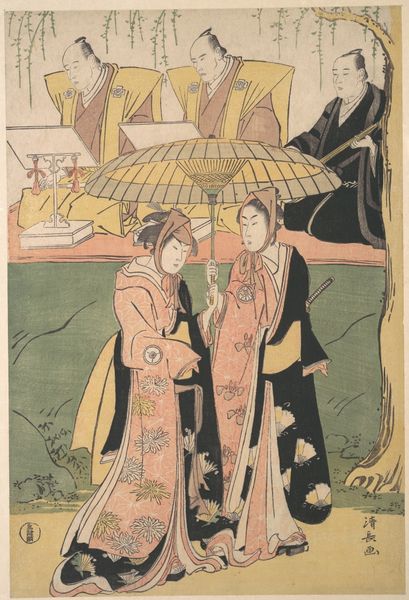
print, woodblock-print
# print
#
asian-art
#
landscape
#
river
#
ukiyo-e
#
woodblock-print
#
genre-painting
Dimensions: height 382 mm, width 258 mm
Copyright: Rijks Museum: Open Domain
Editor: We're looking at "Veerboot op de rivier de Sumida," a woodblock print by Torii Kiyonaga, dating from 1785 to 1789. It has such a tranquil atmosphere; the figures on the boat seem relaxed, almost contemplative. What do you see in this piece, looking at it through a broader social and historical lens? Curator: It's crucial to recognize that ukiyo-e prints like this weren't just landscapes. They were carefully constructed representations of contemporary urban life. Notice the figures. Kiyonaga was known for depicting idealized figures of women from the pleasure quarters. How does seeing these figures, and potentially knowing who they were as real people, influence our view of this peaceful river scene? Editor: That's interesting. It makes me consider the power dynamics at play that I hadn't immediately considered, almost a form of class tourism. What was the significance of the Sumida River itself? Curator: The Sumida River wasn't merely a geographical feature, it was a vital artery connecting the city and a space of leisure. Think about who would have access to this leisure. To appreciate this print, we need to think about class, gender, and access to urban spaces during the Edo period. How does knowing this changes your understanding of what is represented? Editor: It really enriches the context, to understand it as a depiction not just of landscape but of the socio-political landscape. I hadn’t really considered who was, and wasn’t, on that boat! Curator: Exactly. By situating Kiyonaga’s work in its specific social context, we can unveil those deeper layers of meaning. Hopefully, this gives you a fresh way to appreciate Edo-era prints. Editor: Absolutely. I’ll definitely look at ukiyo-e prints differently from now on! Thank you.
Comments
No comments
Be the first to comment and join the conversation on the ultimate creative platform.
